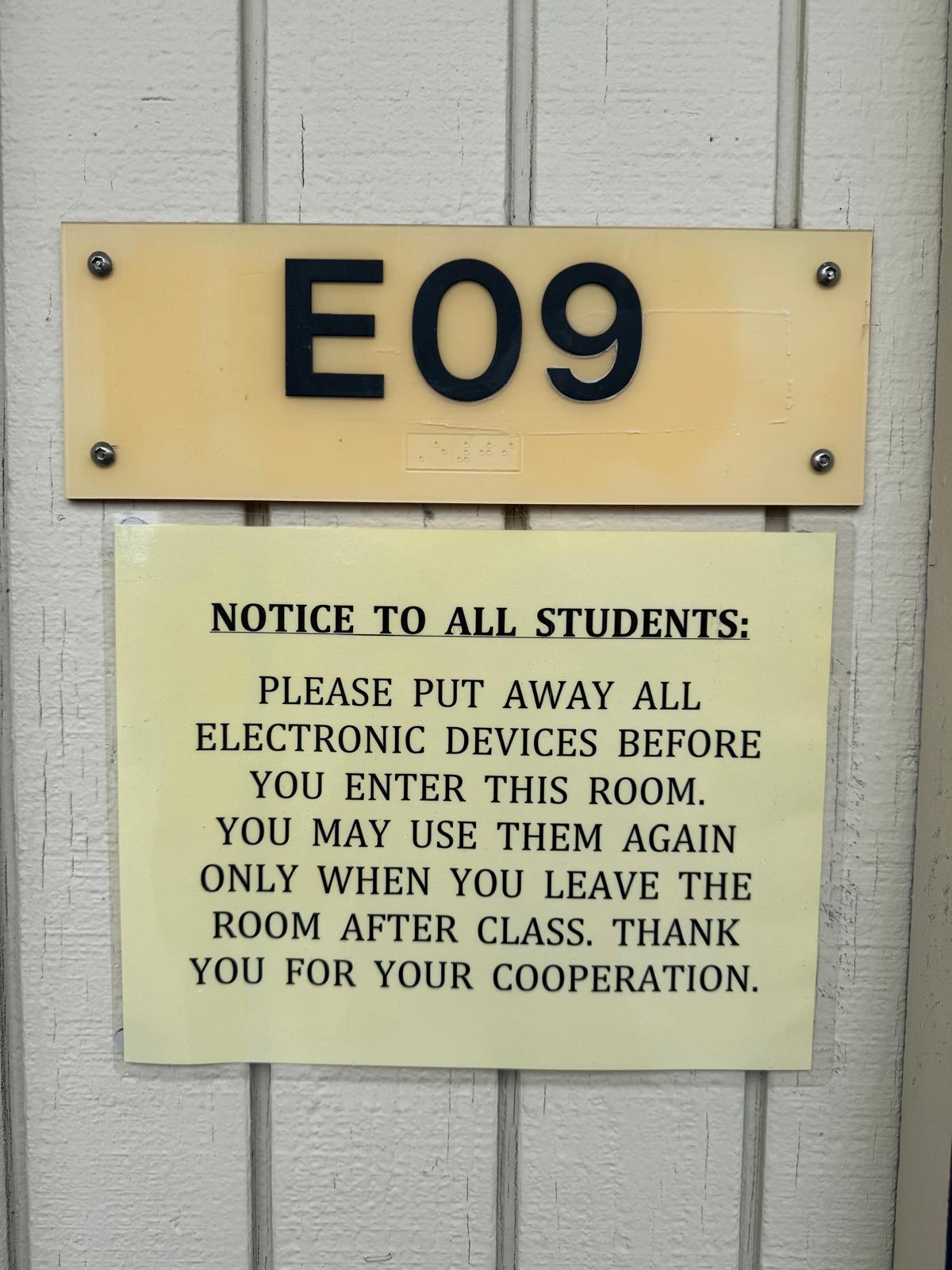California Assembly Bill 3216, also called the Phone-Free School Act, passed last September. The new law requires school districts to establish “a policy to limit or prohibit the use by its pupils of smartphones while the pupils are at a school site or while the pupils are under the supervision and control of an employee or employees of that school district.” School districts must implement this policy by July 1, 2026, according to the bill.
The school has current policies in place to manage students’ use of cell phones in the classroom, Principal and Chief innovator of MHS Greg Wohlman said. However, the next step to comply with the cell phone law is to create a baseline limitation on cell phones that is the same for all classrooms, he said.
The Phone-Free School Act “caused a lot of concern between students, parents, and staff members all across the state,” Wohlman said. “There’s always two sides to it – like, ‘Oh, finally, people are doing something,’ and then the other side is, ‘Nobody’s taking my cell phone away. And that’s not right, and I use it for learning. So there’s always the two sides of it, so (we’re) trying to manage how and what we’re going to do as a school moving forward.”
Some teachers are concerned about how the act will be implemented, Wohlman said.
“Some people say we already have restrictions,” Wohlman said. “But I think the missing piece is that common restriction in all classrooms where students and parents know what the minimum restriction is, and then after that, teachers can ask for more depending on the class. But this would bring a commonality or connection between all classrooms during instructional time – this is the rule. …(The common restriction) will help students, parents, and teachers find common ground.”
While it depends on the context of the classroom, Wohlman believes limiting cell phone use could improve academic performance or classroom engagement, he said.
“If we have 100% engagement, and we have a feedback loop for students to say, ‘I’m missing something in the learning environment in the school’, or ‘I want to learn in a different way,’ that’s easier to understand and accept if everybody was following the cell phone policy,” Wohlman said. “So there is not an angle to say, ‘Well, those students were on their cell phones,’ because then that attitude is that (if) people would put their phones away, they could understand the lesson better, and then our curriculum would work. If we could follow a policy, we have a higher probability of getting accurate data from students and teachers.”
Social studies teacher Danilo Escobar has already implemented a strict no-phone policy in his classroom, requiring students to turn in their phones upon entering his classroom, he said.
“It’s too much of a distraction, and it’s too hard to expect anyone – adult or teenager – to regulate themselves,” Escobar said. “Usually, we pull them out of compulsion, rather than for any particular reason.”
Escobar has noticed a shift in student behavior due to stricter cell phone restrictions, he said.
“They actually start to talk more with each other,” Escobar said. “Even if they move to their Chromebooks, it’s less isolating than phones, since people can see their screens. It helps build a sense of community.”
However, enforcing the rule does come with challenges, Escobar said.
“I haven’t had to take any major disciplinary actions,” Escobar said. “If a student continues to break the rule, I would have to come up with a specific plan of action with that student.”
Some students may need their phones for specific reasons, Escobar said.
“If they’re expecting an important call, they just need to let me know, and I’ll work with them,” Escobar said. “But that’s a rare occurrence.”
Junior Brandon Soo does not think cell phone use should be restricted entirely, he said.
“Usually, students can’t really control themselves or how long they have their cell phones out, but a limited ban, such as restricting phones during assignments or exams, would be more reasonable,”
Limiting cell phone use could help students focus better in class, Soo said.
“It would probably help students socialize a lot more,” Soo said. “During class, people mostly use their phones instead of talking. But during breaks, most students already talk to their peers rather than being on their phones.”
The cell phone ban would not impact academic performance, Soo said. That depends on whether a student actually has the motivation to complete assignments, he said.
“My cell phone is quite important for staying in touch with my parents during the school day,” Soo said. “If an emergency comes up, I’d rather have direct access to contact them than go through school staff or the office.”
Students will have access to their phones outside of instructional time, Wohlman said.
“You think about how much you have access to your cell phone every hour of every day, including brunch, including lunch, before class, after class,” Wohlman said. “You have access to it.”
Wohlman ran a school a decade ago, and the school restricted cell phone use, he said.
“Every kid put the phone in a box when they walked in the door. And as those kids graduated and came back and told their stories, they were so grateful that we restricted cell phone use, and we did that without a state law, (or) district mandate,” Wohlman said. “We just did that because we knew that it was powerful for students, and so now those students have that skill when they go in the workforce, that they know how to put their phone away.”[
Parents all over the country have concerns about limiting cell phones in the classroom, Wohlman said.
“It’s a big deal, so as a school, we’ll try to come together and make it work,” Wohlman said. “I’m not saying it’s going to be easy, and it’s going to be hard for students and hard for staff, but we will find a way to follow the state law.”

